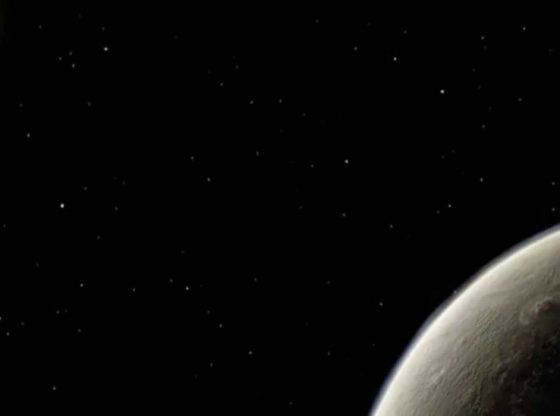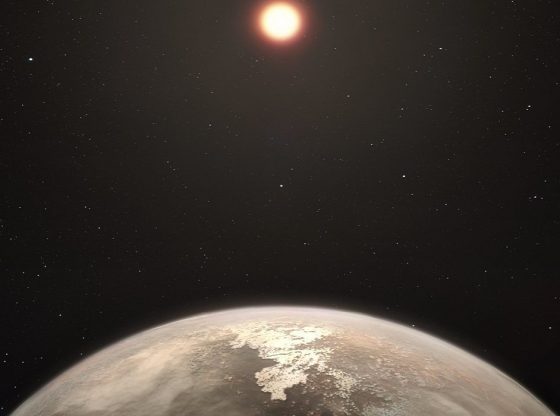
Credits: ESA/Hubble, M. Kornmesser
The discovery, published in Nature Astronomy, is the first successful atmospheric detection of an exoplanet orbiting in its star’s habitable zone, at a distance where water can exist in liquid form.
Astronomers at University COllage London announced that they’ve detected water in the atmosphere of a “super-Earth” called K2-18b, which has habitable temperatures. A ‘super-Earth’ is a planet with a mass between Earth and Neptune.
If confirmed, it is the first time water —a critical ingredient for life as we know it— has been detected on an exoplanet (beyond our solar system). The water was detected as vapor in the atmosphere, but the temperature of the planet means it could sustain liquid water on its surface if it’s rocky.
About eight times the mass of Earth, K2-18b orbits the cool dwarf star K2-18, which is 110 light-years from Earth in the constellation of Leo. K2-18b was discovered in 2015 and is one of the several hundred found by -now-retired- NASA’s Kepler space telescope. NASA’s TESS mission is expected to detect hundreds of more super-Earths in the coming years.
“With so many new super-Earths expected to be found over the next couple of decades, it is likely that this is the first discovery of many potentially habitable planets. This is not only because super-Earths like K2-18b are the most common planets in our Milky Way, but also because of red dwarfs — stars smaller than our Sun — are the most common stars.”
– Co-author Dr. Ingo Waldmann (UCL CSED)
The next generation of space telescopes, including the NASA/ESA/CSA James Webb Space Telescope, ESA’s ARIEL mission NASA’s proposed HabEx mission and ESO’s Extremely Large Telescope, will be able to characterize atmospheres in more detail as they will carry more advanced instruments. ARIEL is expected to launch in 2028 and will observe 1,000 planets in detail to get a truly representative picture of what they are like.
Reference:
Angelos Tsiaras et al. Water vapor in the atmosphere of the habitable-zone eight-Earth-mass planet K2-18b https://doi.org/10.1038/s41550-019-0878-9











![OpenAI. (2025). ChatGPT [Large language model]. https://chatgpt.com](https://www.illustratedcuriosity.com/files/media/55136/b1b0b614-5b72-486c-901d-ff244549d67a-350x260.webp)
![OpenAI. (2025). ChatGPT [Large language model]. https://chatgpt.com](https://www.illustratedcuriosity.com/files/media/55124/79bc18fa-f616-4951-856f-cc724ad5d497-350x260.webp)
![OpenAI. (2025). ChatGPT [Large language model]. https://chatgpt.com](https://www.illustratedcuriosity.com/files/media/55099/2638a982-b4de-4913-8a1c-1479df352bf3-350x260.webp)








